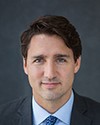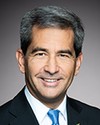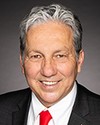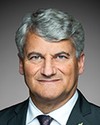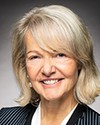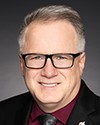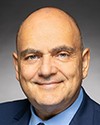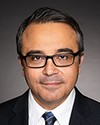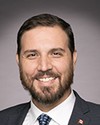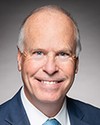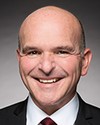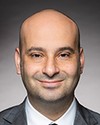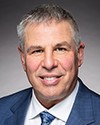Madam Speaker, it is both a great honour and a sad responsibility to stand in the House today, on behalf of the people of Esquimalt—Saanich—Sooke, to pay tribute to Her Majesty Queen Elizabeth II in this special commemorative session. For me, today is another one of those moments that so many of us never imagined being part of. I think we are all still in a bit of shock, because despite her advanced age, we really had not begun to think about or contemplate a world without the only head of state that most of us have known our whole lives.
It is an inspiring reminder of just how long and in how many ways the Queen served all of us to note that not only was she our longest serving monarch, but Queen Elizabeth was among the dwindling group of veterans who proudly served in World War II. In early 1945, as a young woman of 19, she joined the British Auxiliary Territorial Service, becoming the first female member of the royal family on active duty, where she served in non-traditional roles in learning how to drive and maintain vehicles, an interest she maintained for the rest of her life.
When we think of her long reign, it is important to remember that her accession to the throne really was doubly unexpected. In 1936, the unexpected abdication of her uncle, King Edward VIII, made her heir to the throne at age 11. Then, the early and equally unexpected death of her father, King George VI, in 1952, thrust her into the role of Queen at the age of 26.
However, Queen Elizabeth seemed to have intuitively understood from the beginning that the role of constitutional monarch requires a broad knowledge and a depth of understanding of both politics and world affairs in order to carry out the role of Queen effectively. She worked very hard at making sure that she was fulfilling that role in the best way she could. She knew that although her powers were in fact very few, they remained very significant.
I apologize here for still being a recovering political scientist even after 11 years in the House, but I do think that an understanding of the role of constitutional monarch is important to understanding just how good a queen Queen Elizabeth II was.
By the 1860s, British constitutional scholar Walter Bagehot famously asserted that only three rights remained to the British sovereign: the right to be consulted, the right to encourage and the right to warn, a clear statement of the line between governing and reigning in a constitutional monarchy. While the Queen could exercise those rights in private, other important functions of the monarchy always required that those rights be exercised only in private. Those other important functions are to serve as a guarantee of constitutional government, to guarantee continuity of government and to provide a symbol of national unity above politics.
It was the passage of the Statute of Westminster by the U.K. Parliament in 1931 that created a separate Canadian monarchy in law. This act also clarified that the Canadian Governor General was the direct representative of the sovereign and not the U.K. government. At the same time, it confirmed the well-established precedent that the few reserve powers of the monarchy, those largely revolving around the appointment and dismissal of prime ministers, could only be discharged by the Canadian Governor General and not the Crown. What was left to British monarchs, now established legally as our Canadian monarchs? It was almost nothing, except, again, guaranteeing constitutional government, guaranteeing continuity and guaranteeing national unity.
While some have trouble seeing a monarch as a symbol of continuity and of the state and unity, personally, I see this concept as providing a key advantage by separating the concept of loyalty from politics. There are other solutions to this problem, but none are so simple and reliable as a constitutional monarchy. That is why there are so many constitutional monarchs among the great democracies of the world, not just Canada, Australia, New Zealand, the U.K. and other members of the Commonwealth, but also Sweden, the Netherlands, Denmark, Belgium, Norway and Japan.
Today, we need to remind ourselves how much Queen Elizabeth II has come to represent the model constitutional monarch and exemplify the strengths of constitutional monarchy. In our system, the fact that loyalty is expressed toward the Crown protects us from the worst ravages of civil discord. Our oaths are sworn to the Crown and not to the politicians of the day. This means, as some of us like to point out, that everyone can feel free to oppose the Prime Minister without having our loyalty to Canada being questioned. We have seen the dangers of unifying symbolic and political roles in a single person and how that is still playing out in our neighbour to the south.
Queen Elizabeth's long life has caused many to take for granted a second strength of constitutional monarchy, which is continuity. She saw 12 Canadian prime ministers, from Louis St. Laurent to our current Prime Minister, 12 B.C. premiers, from W.A.C. Bennett to John Horgan, and countless other provincial premiers come and go. It is not a surprise given that she served Canada for nearly half of our time as an independent country.
When a constitutional monarch dies, there is no doubt about the continuity of the institution, as their heirs automatically assume the throne. When prime ministers leave office, in turn the constitutional monarchy guarantees there will be someone there to make sure the job is filled.
At this point, I want to acknowledge that the symbol of the Crown has differing meanings for first nations in this country, and I express my respect for those who have different understandings of the role and responsibilities of the sovereign as they relate to first nations. I acknowledge that this understandably results in differing and diverse reactions to the passing of Queen Elizabeth II among first nations.
Now, after my long digression on the role of the monarchy, let me return to the long reign of Queen Elizabeth in less theoretical terms.
She did this job with incredible grace and dignity, in good times and bad, and always under the relentless scrutiny of the press and public. However, somehow, despite the limitations inherent in her role, Queen Elizabeth still managed to let the person she was shine through. I am going to recount two stories that illustrate this for me, although neither is my own story. I trust the owners will not mind, as they have told these stories publicly before.
A few days ago, Dmitriy Shapiro reminded us of the story of the Queen's meeting with Holocaust survivors at the 60th anniversary commemoration of the liberation of Auschwitz in 2005, as recounted by late Chief Rabbi Jonathan Sacks. Sacks wrote about the Queen's attendance where she met with Holocaust survivors, and while protocol and scheduling normally kept the Queen to a very tight schedule, with the Queen usually being ushered away promptly by her staff at the end of her appearance, on this occasion Queen Elizabeth refused to leave. She remained, speaking individually to members of the large group who had gathered. One of her attendants told Rabbi Sacks that they had never seen her stay so long after a scheduled departure. Let me quote Rabbi Sacks:
She gave each survivor—it was a large group—her focused, unhurried attention. She stood with each until they had finished telling their personal story. It was an act of kindness that almost had me in tears. One after another, the survivors came to me in a kind of trance, saying: “Sixty years ago I did not know if I would be alive tomorrow, and here I am today talking to the queen.” It brought a kind of blessed closure into deeply lacerated lives.
My second story, more brief, demonstrates the Queen's compassion. It has been told by Catherine Clark, who was stuck, as a 10-year-old, at a reception of a Commonwealth heads of government meeting. When she said she wanted to leave, she was told that no one could leave before the Queen, so she waited by the door. A short time later, the Queen came by and asked why she was still at the reception after all this time. Catherine told the Queen that she was waiting for her to leave first, to which the Queen responded, “Well, let’s go then, shall we?” Then she took her hand and off they went.
There are so many more stories of this kind, stories of her kindness and genuine interest in the ordinary people she served. She has touched so many individuals and families. Even in my own family, my uncle, John Garrison, now in his eighties, still likes to recount the story of serving as part of an honour guard when Queen Elizabeth placed a wreath at the Canadian cross on a visit to Arlington National Cemetery in Washington in 1957. He recalls standing along the red carpet when she passed, close enough to reach out and touch her, although he says with a glint in his eye, “Even at a young age I understood that things wouldn't go well for me if I actually did that.”
My own experiences with the Queen were always at a greater distance, including being on the streets of Ottawa in 1983 when the Queen came to preside over the repatriation of the Canadian Constitution and in 1994 when she came to the Commonwealth Games in Victoria. On those occasions, I saw the genuine affection for the Queen first-hand.
My closest personal connection to Queen Elizabeth came at the time of her Diamond Jubilee. One way the Queen chose to celebrate her Diamond Jubilee was by awarding medals for community service, which is so fitting for a monarch whose whole life was one of exemplary service. It was a great honour as a member of Parliament to award those medals in my riding on her behalf, and it meant so much to the recipients.
Queen Elizabeth's love for Canada was shown by her many visits: 22 as a sovereign in total, I am told, including seven visits to British Columbia, with stops on Vancouver Island each time. Some stops in my riding are well documented, including her visits to review cadets at what was then the Royal Roads Military College in 1951 and 1983, showcasing the close connection the royal family has always had with the Canadian Forces.
As well in 1983, the Queen unveiled a plaque at Craigflower school in my riding to commemorate it as the oldest school building still standing in western Canada.
Of course, some of her visits had greater significance, including the 1971 visit marking the 100th anniversary of British Columbia joining Confederation, the 1994 opening of the Commonwealth Games, and probably the most Canadian thing Her Majesty ever did, which was to drop the puck at a National Hockey League exhibition game between the Vancouver Canucks and the San Jose Sharks in 2002.
What stands out to me in all those visits was the obvious care and attention shown to all those the Queen and other members of the royal family met. This care and attention given to all kinds of Canadians has set a powerful message of belonging and inclusion. In doing so, the Queen set a precedent that will long survive her, a precedent I have recently seen Prince William and Prince Harry follow in carrying on the legacy of Princess Diana in embracing the 2SLGBTQI+ community.
As my time draws to a close, let me extend my personal condolences, along with those of my constituents, to the royal family in this time of great personal loss, of a mother, a grandmother and a great-grandmother.
Let me also say that I, like many, find it hard to imagine a Canada and indeed a world without the Queen. However, in our political tradition, where precedent plays such a great role, I am confident the Queen has left us with clear guidance on how to preserve a democratic government and how to promote unity and inclusion. She has given us a powerful example of a life of service, one lived with enormous dignity and grace.
Farewell, Queen Elizabeth II. May she rest in peace.



